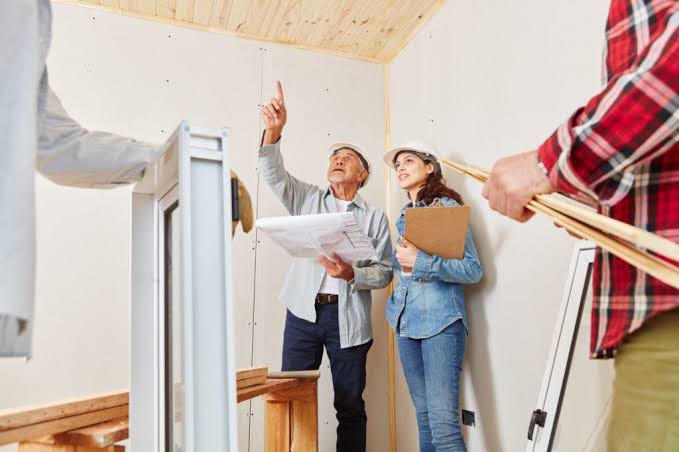
House flipping can be a highly profitable endeavor for investors, but it requires careful planning and meticulous attention to detail. This article presents a comprehensive house flipping investor checklist, outlining the crucial steps from final inspections to the sales process.
It covers important aspects such as conducting thorough inspections, making necessary repairs, evaluating the property’s condition, and addressing maintenance concerns.
Additionally, it provides valuable tips for a smooth sale, including estimating repair costs, expanding one’s network, and staying informed about market trends.
By following this checklist, investors can greatly increase their chances of a successful and profitable house flip.
Final Inspections and Preparation
Final inspections are a crucial step in the house flipping process, ensuring that the property meets all necessary housing, building, and health code requirements. These inspections serve as a verification for both the buyer and the seller.
For the buyer, it is an opportunity to confirm that the property’s condition aligns with the original purchase agreement. On the other hand, the seller can demonstrate that all agreed-on conditions and repairs have been met.
Conducting final inspections is vital as it raises concerns about the property’s condition if not done. To prepare for these inspections, it is essential to have copies of the original purchase contract, gather any inspection documents related to health, housing, or building codes, and keep documentation of prior issues and repairs.
Additionally, it is crucial to address all repairs and maintenance concerns before the inspection, following a comprehensive house flipping checklist or property inspection checklist rental.
House Flipping Checklist
To ensure a successful house flipping venture, investors should utilize a comprehensive checklist to evaluate each room in the property. This flipping houses checklist serves as a guide to identify areas that require repairs, particularly in high-impact spaces like the kitchen and bathrooms.
It is essential to inspect walls for issues such as peeling paint or damaged drywall. Additionally, the flooring, plumbing, and electrical systems should be thoroughly assessed to ensure they are in good working condition.
Furthermore, the overall exterior condition of the property should be inspected to determine if any improvements or maintenance are necessary.
Sales Process After Inspections
After completing the final inspections, the sales process for a flipped property begins. One crucial step is transferring the property title or deed and paying taxes on the sale.
To increase the chances of a successful sale, consider hiring a real estate agent for staging and marketing. They have resources and connections to attract potential buyers. Building a network of investors or buyers through social media or real estate groups can also help with selling the property.
Remember to understand the approximate cost of basic repairs and plan for unexpected expenses during the flipping process. Conducting a professional inspection is essential to avoid future complications. Additionally, researching market trends and buyer preferences will maximize the chances of a smooth and successful sale.
Tips for a Smooth Sale
Achieving a seamless transaction is paramount in the house flipping process, and there are several tips that can contribute to a smooth sale.
First, it is important to understand the approximate cost of basic repairs. This knowledge will help you set a competitive asking price and negotiate with potential buyers.
Additionally, joining social media or real estate groups can expand your network and connect you with interested investors or buyers. Building relationships in this way can greatly increase your chances of a successful sale.
Another crucial tip is to always get a professional inspection to avoid future complications. By addressing any issues before listing the property, you can instill confidence in potential buyers and expedite the sale process.
Research and Market Analysis
Researching and conducting a thorough market analysis is essential for house flipping investors to understand the current trends and demands of the real estate market. By gathering data and analyzing market conditions, investors can make informed decisions about which properties to purchase, how much to invest in renovations, and how to price the flipped property for a successful sale.
Market analysis involves studying factors such as property values, neighborhood demographics, supply and demand dynamics, and recent sales trends. This research helps investors identify profitable opportunities and avoid potential pitfalls. By staying informed about the market, investors can adapt their strategies and make confident decisions that maximize their chances of a successful house flip.
A comprehensive market analysis is an invaluable tool for any house flipping investor looking to achieve profitable returns on their investment.
Conclusion
In conclusion, following a comprehensive house flipping investor checklist is crucial for a successful and profitable sale. By conducting final inspections, making necessary repairs, evaluating the property’s condition, and addressing maintenance concerns, investors can ensure that the property meets code requirements and is in optimal condition for sale.
Additionally, considering the sales process after inspections, such as transferring the property title and utilizing a real estate agent for staging and marketing, can further enhance the chances of a smooth and lucrative sale.
